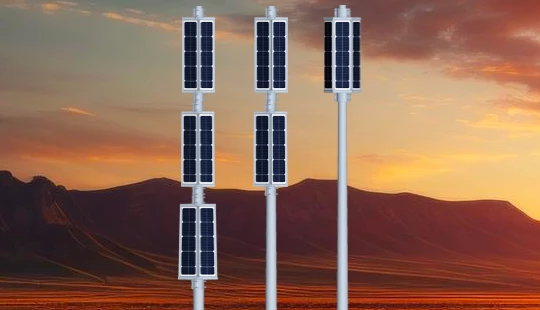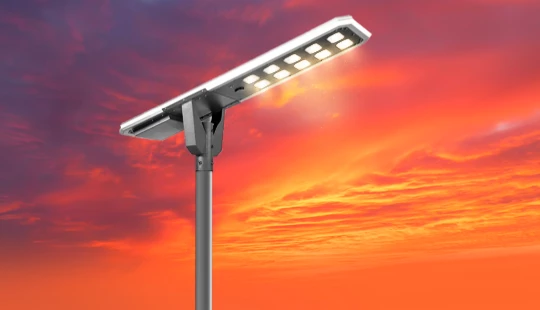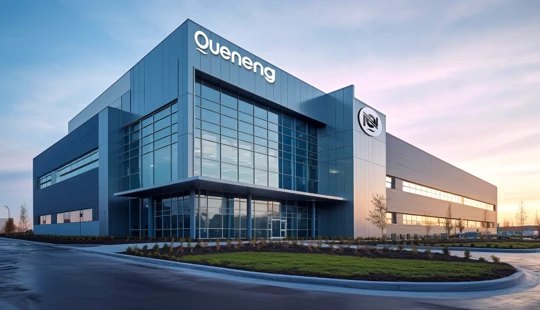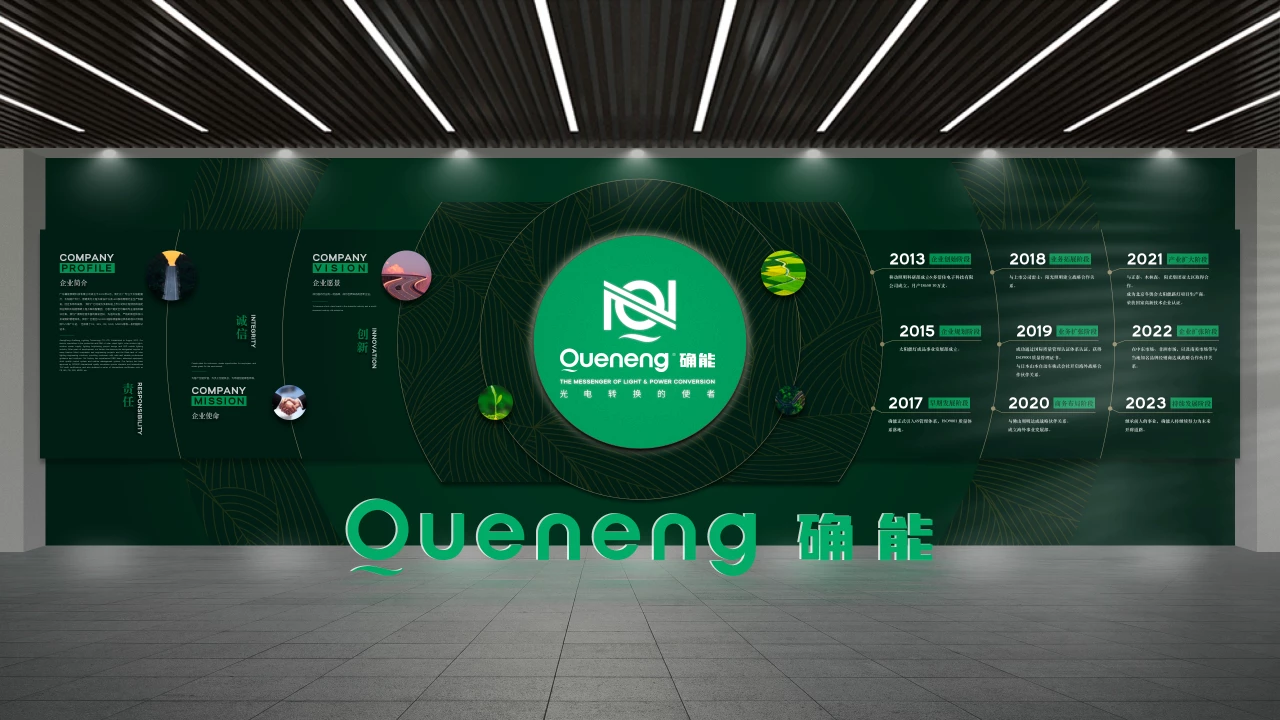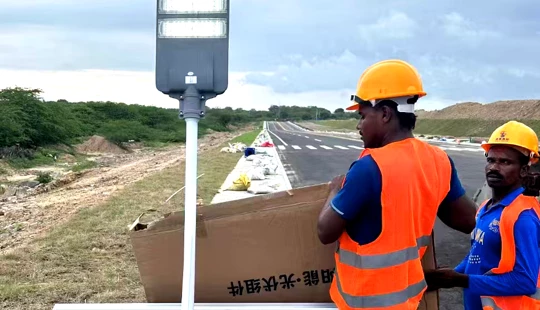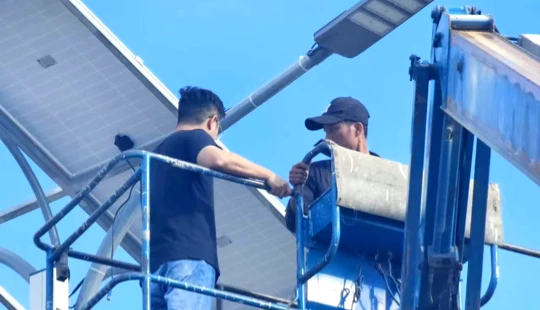Top government-approved solar lights in the Philippines | Insights by Quenenglighting
Navigating the Procurement of Top Government-Approved Solar Lights in the Philippines
The Philippines is experiencing a burgeoning demand for sustainable, cost-effective lighting solutions, driven by aggressive government initiatives for rural electrification, infrastructure development, and climate resilience. For B2B buyers, procurement officers, and project managers, choosing 'government-approved' solar lights is about more than just compliance; it's about ensuring long-term reliability, optimal performance, and a significant return on investment. This comprehensive guide addresses the critical considerations for informed procurement in the Philippine solar lighting market.
What does 'Government-Approved' Truly Mean for Solar Lights in the Philippines?
When searching for 'government-approved' solar lights, it's crucial to understand that there isn't a single stamp of approval from a specific government body for every product model. Instead, it primarily refers to adherence to national and international quality, safety, and performance standards that make products suitable and preferred for government procurement processes.
- Local Compliance: Government tenders in the Philippines often require products to comply with Department of Trade and Industry (DTI) product safety and quality standards, which typically align with international benchmarks. Local Government Units (LGUs) and national agencies follow guidelines from the Government Procurement Policy Board (GPPB) that specify performance benchmarks, warranty requirements, and supplier eligibility.
- International Certifications: Reputable manufacturers will provide products certified to globally recognized standards. Look for:
- CE (Conformité Européenne): Indicates compliance with European health, safety, and environmental protection standards.
- RoHS (Restriction of Hazardous Substances): Ensures the absence of specific hazardous materials.
- FCC (Federal Communications Commission): For electronic products, certifies that electromagnetic interference is within limits.
- ISO (International Organization for Standardization): Particularly ISO 9001 (Quality Management Systems) and ISO 14001 (Environmental Management Systems), indicating a manufacturer's commitment to quality and environmental responsibility.
- IP (Ingress Protection) Ratings: Such as IP65, IP66, or IP67, critical for protection against dust and water ingress, essential for the Philippine climate.
- IEC (International Electrotechnical Commission) Standards: For solar panels, batteries, and other components, ensuring performance and safety.
- LM-79/LM-80: For LED light engines and fixtures, providing photometric data and lumen maintenance projections.
What Key Features Ensure Long-Term Reliability and Performance?
Investing in solar lighting for public or large-scale projects requires a focus on robust features that guarantee durability and consistent performance over many years.
- High-Efficiency Solar Panels: Opt for monocrystalline silicon panels with efficiency rates typically ranging from 20-23%. These panels convert more sunlight into electricity per square meter, are more compact, and perform better in lower light conditions compared to polycrystalline panels.
- Advanced Battery Technology: LiFePO4 (Lithium Iron Phosphate) batteries are paramount for longevity and safety. They offer superior thermal stability, a longer cycle life (typically 2,000 to 4,000+ charge cycles), and a service life of 8-10 years. Ensure the battery capacity provides at least 3-5 nights of autonomy on a full charge, crucial for periods of limited sunlight.
- Intelligent MPPT Controller: A Maximum Power Point Tracking (MPPT) charge controller optimizes the power harvested from the solar panel, increasing charging efficiency by 15-30% compared to older PWM controllers. Smart features like PIR motion sensors, timed dimming, and IoT capabilities for remote monitoring and control enhance energy savings and operational flexibility.
- Durable Casing & High IP Rating: The fixture's housing must be constructed from robust, corrosion-resistant materials like die-cast aluminum alloy. An IP65 or IP66 rating is essential for protection against heavy rain, dust, and humidity prevalent in the Philippines. Furthermore, ensure the design is certified to withstand strong winds, ideally up to 150 km/h, given the country's susceptibility to typhoons.
- High-Lumen Output LED Chips: Utilize reputable LED chip brands (e.g., Cree, Philips, Osram) known for their high luminous efficacy (e.g., 160-180 lumens per watt). This ensures maximum brightness with minimal power consumption, extending battery life and overall efficiency.
- Comprehensive Warranty & Support: A minimum of 3-5 years warranty on the entire system, coupled with readily available after-sales support, technical assistance, and spare parts, is critical for long-term project viability and peace of mind.
What is the ROI and Cost Comparison with Traditional Lighting?
While the initial outlay for a high-quality, government-approved solar lighting system might seem higher, the Return on Investment (ROI) becomes evident quickly due to significant long-term savings.
- Initial Investment vs. Long-Term Savings: The upfront cost of a robust solar lighting system can be 1.5x to 3x higher than traditional grid-tied lighting, especially for high-spec models. However, this is offset by the complete elimination of ongoing electricity bills.
- Zero Electricity Bills: This is the most compelling financial advantage. Once installed, solar lights operate independently of the grid, incurring zero ongoing electricity costs. Over a decade, this translates to substantial operational expenditure (OpEx) reductions, particularly in areas with high grid electricity rates or unreliable supply.
- Reduced Maintenance: Modern solar lights are largely self-sufficient. Beyond routine cleaning of panels and occasional battery checks (especially for non-integrated systems), maintenance is minimal compared to grid-tied systems that require trenching, wiring, and ongoing grid connection fees.
- Rapid Payback Period: Depending on the local electricity rates, system cost, and intensity of use, the payback period for a quality solar lighting system in the Philippines is typically between 3 to 5 years. After this period, the lighting provides 'free' illumination for the remainder of its 10-15+ year lifespan, generating significant savings.
- Environmental & Social Benefits: Beyond financial ROI, solar lights offer invaluable indirect benefits, including a reduced carbon footprint, improved public safety in off-grid and remote communities, and enhanced energy independence, aligning with national sustainable development goals.
What are the Common Challenges in Deploying Solar Lighting in the Philippines and How to Mitigate Them?
The unique climate and socio-economic landscape of the Philippines present specific challenges for solar lighting deployment, but these can be effectively mitigated with proper planning and robust product selection.
- Extreme Weather Conditions: The Philippines is prone to an average of 20 typhoons annually, along with heavy rainfall and high humidity.
- Mitigation: Prioritize solar lights with high IP ratings (IP66 or IP67), robust structural designs (e.g., reinforced poles, wind load certifications for 150km/h+), and durable, corrosion-resistant materials suitable for coastal and tropical environments.
- Battery Degradation due to Heat: High ambient temperatures throughout the year can accelerate battery degradation and shorten lifespan.
- Mitigation: Insist on LiFePO4 batteries, which are known for their superior thermal stability. Ensure the light's design incorporates effective thermal management (e.g., heat sinks, ventilation) and consider systems with temperature compensation for charging.
- Theft and Vandalism: Valuable components like batteries and solar panels can be targets, especially in remote or less-monitored areas.
- Mitigation: Opt for integrated all-in-one designs where the battery is housed securely within the light fixture or pole, making it harder to access. Use anti-theft bolts and secure mounting mechanisms. Remote monitoring (IoT) capabilities can also provide real-time alerts.
- Lack of Local Technical Expertise for Installation and Maintenance: While solar light installation is generally simpler than grid-tied systems, specialized knowledge may be needed for complex setups or advanced troubleshooting.
- Mitigation: Partner with suppliers who offer comprehensive installation guides, provide training programs for local teams, and have readily available local technical support or authorized service centers. Modular designs simplify component replacement.
- Inconsistent Sunlight: While generally sunny, prolonged cloudy periods or heavy overcast skies can impact charging efficiency.
- Mitigation: Oversize solar panels and battery capacity slightly to ensure sufficient autonomy even during extended low-sunlight periods. Utilize MPPT controllers for maximum energy harvest from any available light.
Where to Source Reputable, Government-Approved Solar Lights for Bulk Purchase?
For B2B buyers and government procurement, sourcing reliable solar lights is as critical as understanding their technical specifications.
- Direct Manufacturers with Global Presence: For large-scale projects and bulk orders, sourcing directly from reputable manufacturers often provides the best value, customization options, and direct access to technical support and comprehensive warranties. Verify their ISO certifications (e.g., ISO 9001, ISO 14001) and international product standards.
- Authorized Distributors/Importers: In the Philippines, work with established distributors who are authorized by global solar lighting brands. They can offer local inventory, faster delivery, navigate customs and import regulations, and provide local support and installation services.
- Supplier's Track Record: Request case studies, references from previous government or large-scale private projects in similar environments. A proven track record of successful deployments and satisfied clients is a strong indicator of reliability and capability.
- Certifications and Compliance: Always verify that the supplier's products hold the necessary international certifications (CE, RoHS, FCC, IEC, IP ratings) that are often prerequisites for government tenders. Request authentic test reports and detailed data sheets.
- After-Sales Support and Warranty: A robust warranty (minimum 3-5 years for the entire system) and readily available spare parts are non-negotiable for a long-term investment. Inquire about their service network and responsiveness in the Philippines.
Concluding with Quenenglighting's Advantages:
Quenenglighting stands as a premier choice for government-approved solar lighting solutions in the Philippines. We specialize in robust, high-performance solar lights engineered to meet the stringent demands of public infrastructure and large-scale projects. Our products feature:
- High Quality Components: Utilizing high-efficiency monocrystalline solar panels (22%+ conversion rate) and long-life LiFePO4 batteries (4000+ cycles, 10-year design life), ensuring consistent and reliable illumination even in challenging conditions.
- Intelligent & Durable Design: Integrated with advanced MPPT controllers and smart dimming features for optimal energy management. Our die-cast aluminum alloy housings boast an IP66 rating and exceptional wind resistance (certified for winds up to 160 km/h), designed to withstand the Philippines' challenging climate.
- Certifications & Compliance: All products meet rigorous international standards (CE, RoHS, FCC, ISO certified, IEC compliant), making them ideal for government and large-scale procurement, ensuring peace of mind regarding quality, safety, and environmental responsibility.
- Comprehensive Support: We offer extensive warranties, dedicated technical support, and customization services to meet specific project requirements, ensuring a seamless experience from procurement to deployment and beyond.
- Proven ROI: Our solutions deliver significant energy savings and minimal maintenance requirements, translating to a rapid return on investment and substantial long-term cost benefits for your projects.
Quenenglighting is your reliable partner for sustainable, high-quality solar lighting infrastructure in the Philippines, committed to powering a brighter, more sustainable future.

Have more questions about our products or services?
The latest hot news you might like

Discover how solar panels power street lights, exploring the technology behind solar energy conversion, storage systems, and how solar-powered street lights are revolutionizing urban and rural lighting solutions.

Learn how AC Solar Hybrid Street Lights work, their advantages, disadvantages, system behavior in low-sunlight conditions, and why hybrid technology is ideal for regions with unstable sunlight.

Municipalities around the world are increasingly adopting solar-powered streetlights as part of their urban development strategies. Rising energy costs, the need for sustainable infrastructure, and government green initiatives are driving cities to switch from traditional street lighting to advanced LED solar streetlights.
Queneng Lighting provides municipalities with cost-effective, energy-efficient, and durable solar lighting solutions, ensuring safe and sustainable public spaces.
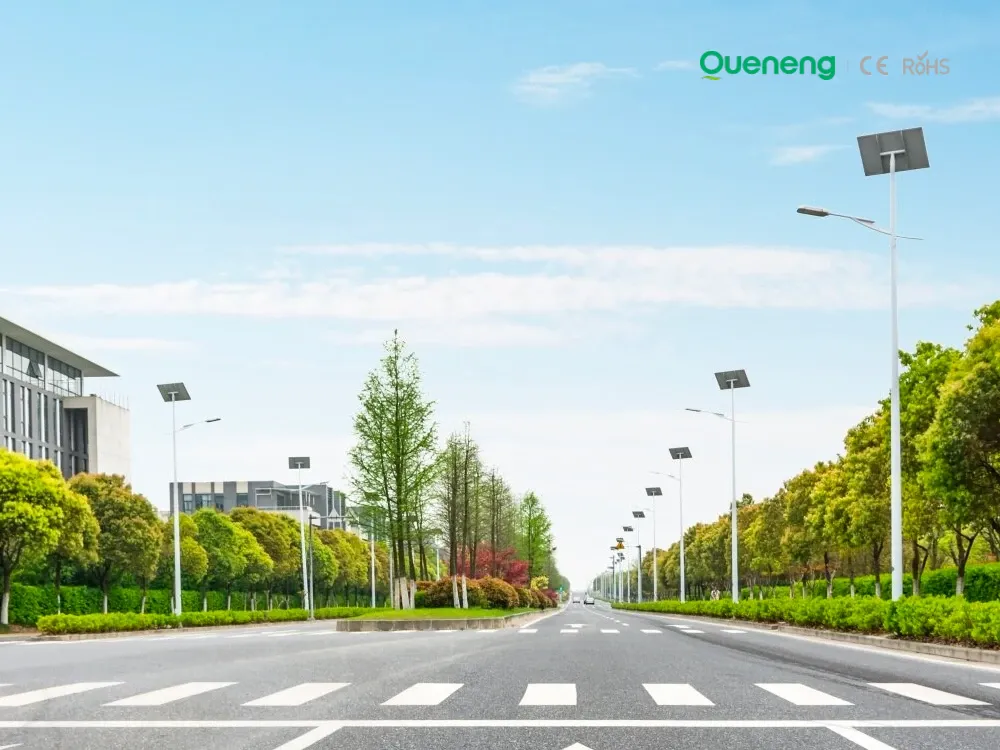
In recent years, the purchase of solar streetlights for municipalities has become a growing trend across the globe. Local governments are under pressure to reduce public expenditure, promote green energy, and create safer communities. Solar streetlights provide a reliable, cost-effective, and sustainable solution that meets these needs. Queneng Lighting, as a leading solar street lighting manufacturer, has supported multiple municipal projects worldwide with customized and energy-efficient solutions.
FAQ
Battery Performance and Testing
What is the power output of the battery?
The smaller the internal resistance of the battery, the higher the output power. The internal resistance of the battery should be smaller than the internal resistance of the electrical appliance. Otherwise, the power consumed by the battery itself will be greater than the power consumed by the electrical appliance, which is uneconomical and may damage the battery.
Commercial and Industrial Parks
Are the lights customizable for different industrial park layouts?
Yes, we provide customized solutions tailored to the specific lighting requirements and layouts of your park.
Battery and Analysis
What conditions are best for batteries to be stored under?
Theoretically, there is always energy loss when a battery is stored. The inherent electrochemical structure of the battery determines that battery capacity will inevitably be lost, mainly due to self-discharge. Usually the size of self-discharge is related to the solubility of the cathode material in the electrolyte and its instability after heating (easy to self-decompose). Rechargeable batteries have a much higher self-discharge than primary batteries.
Tourist Attractions and Resorts
Can solar lights be used for both functional and decorative purposes?
Yes, solar lighting is versatile and can be used for both functional purposes, such as illuminating pathways and parking lots, and decorative purposes, such as enhancing garden features or architectural details.
Solar Street Light Luyi
Are Luyi solar street lights suitable for all outdoor environments?
Yes, Luyi solar street lights are highly versatile and suitable for a wide range of outdoor environments. Whether for urban streets, rural roads, parking lots, parks, or pathways, Luyi lights provide reliable illumination in any setting. Their weatherproof and durable construction makes them ideal for harsh outdoor conditions, including extreme heat, cold, rain, and snow.
Industry
Will the solar street lights work effectively in winter or during low sunlight conditions?
Queneng’s solar lights are equipped with high-capacity batteries, ensuring normal illumination even in low-light conditions, making them ideal for regions with frequent winter or rainy weather.
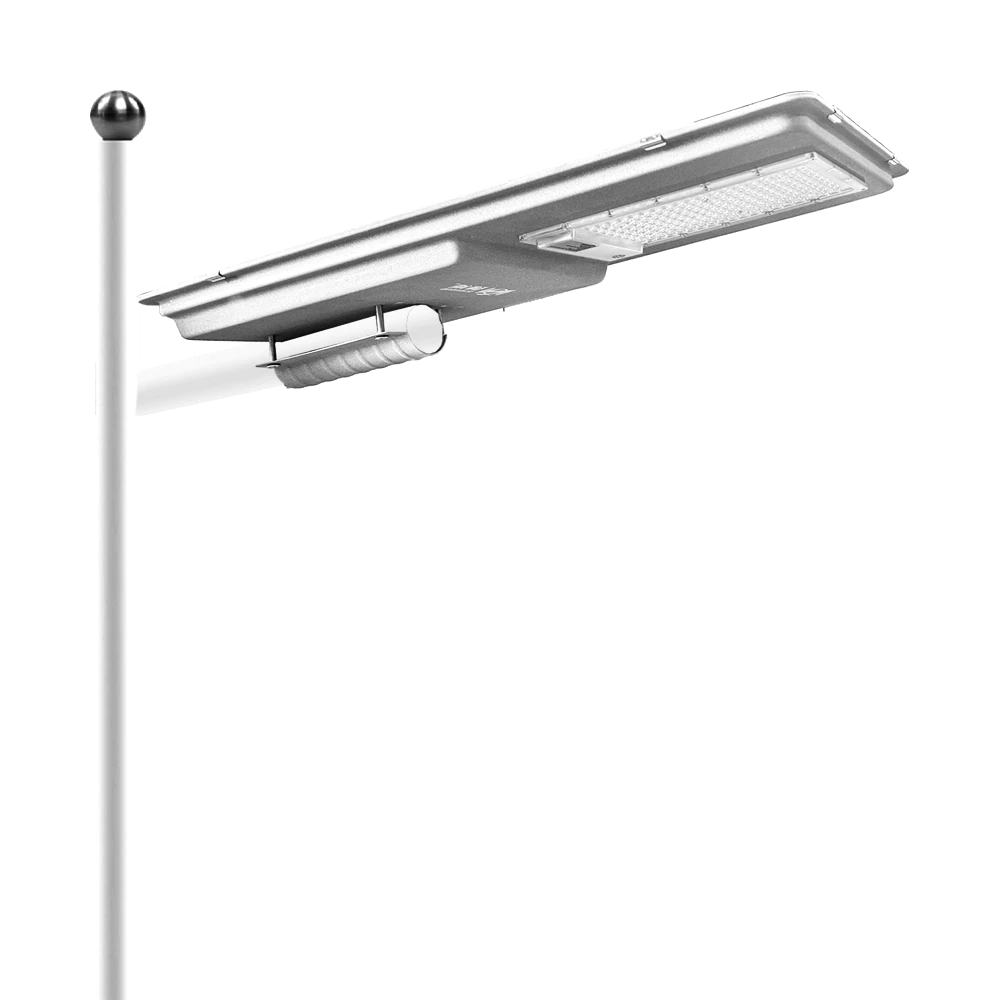
Queneng's Lufa high-efficiency solar LED street lights illuminate urban and commercial spaces brilliantly. These commercial solar LED street lights offer superior energy savings and reliable performance, making them an ideal sustainable lighting solution.
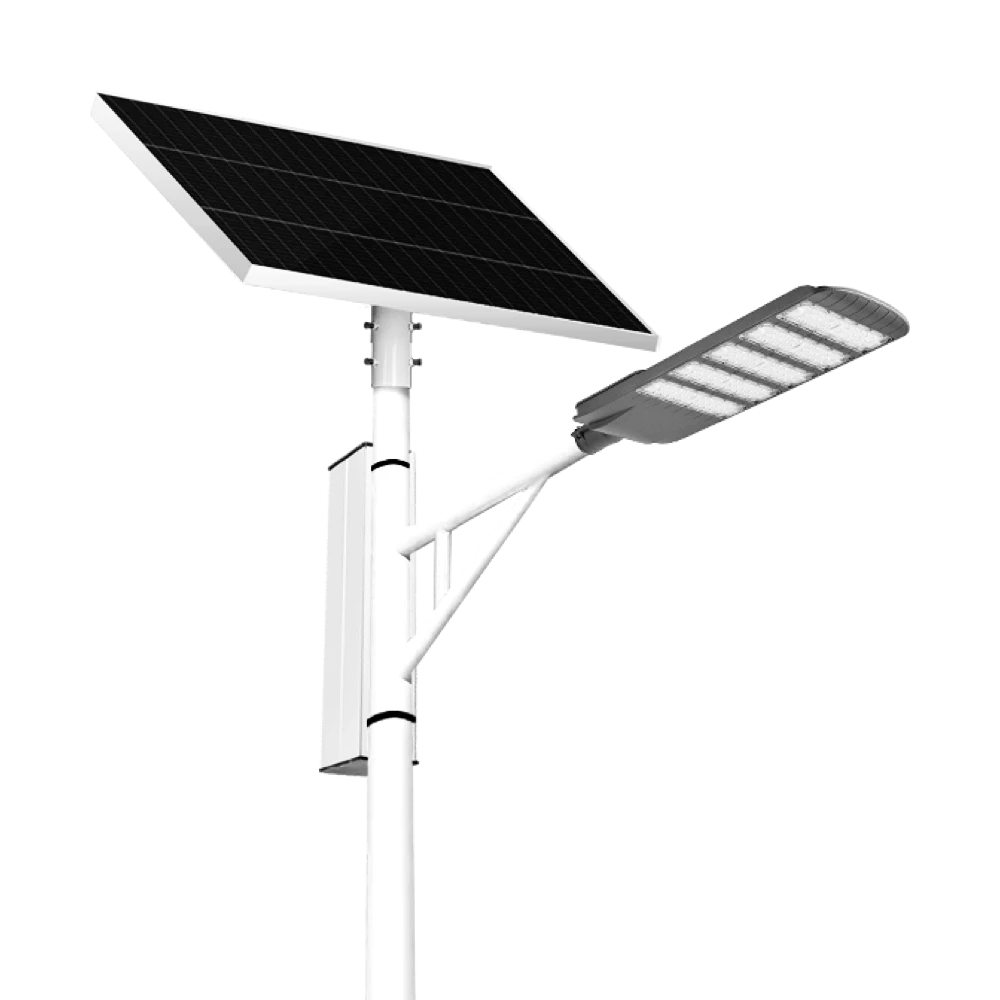
The Solar Streetlights of Luhao for Municipalities are designed to deliver reliable, energy-efficient, and cost-effective public lighting solutions. Equipped with advanced LED technology, durable lithium batteries, and high-efficiency solar panels, these streetlights provide consistent illumination for roads, parks, residential areas, and government projects.
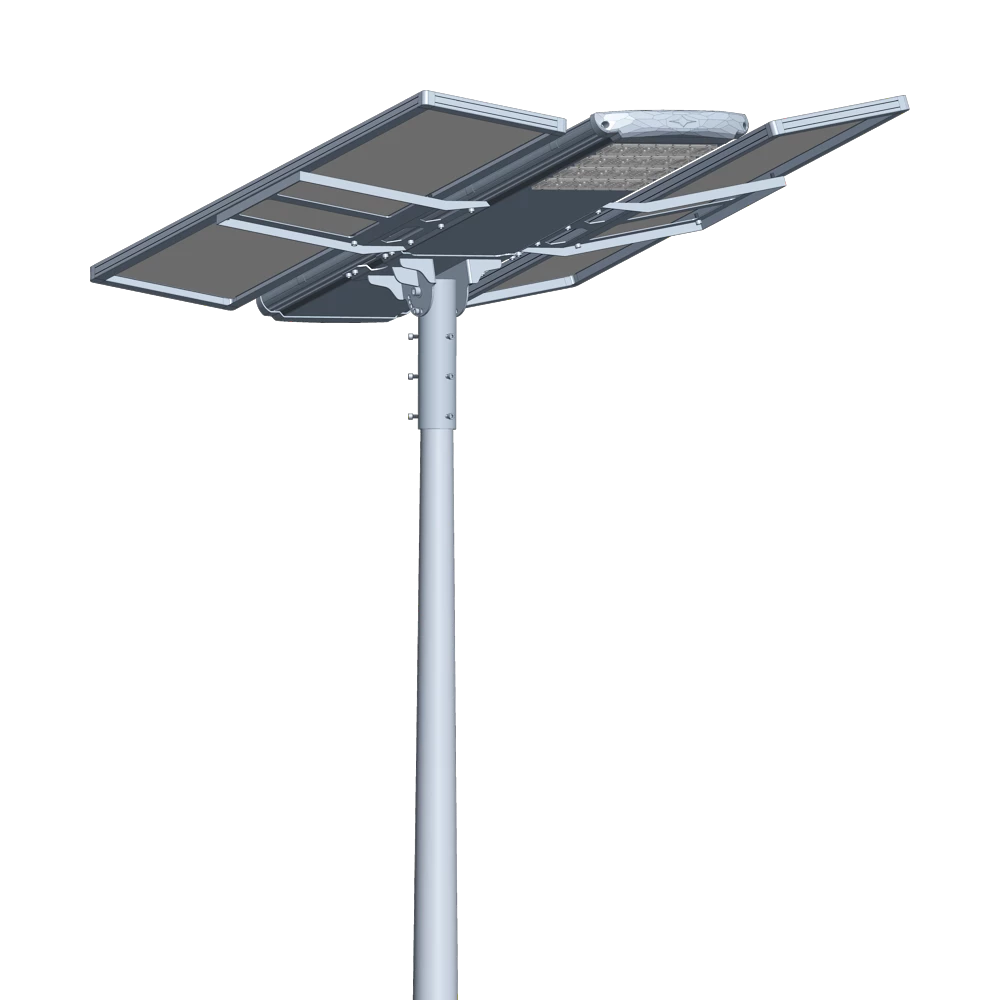
Introducing the Luqing Solar Street Light by Queneng, Efficient LED lighting powered by solar energy is perfect for illuminating outdoor areas. Harness the power of solar energy for sustainable, reliable street lighting. Ideal for eco-friendly, cost-effective outdoor illumination solutions.
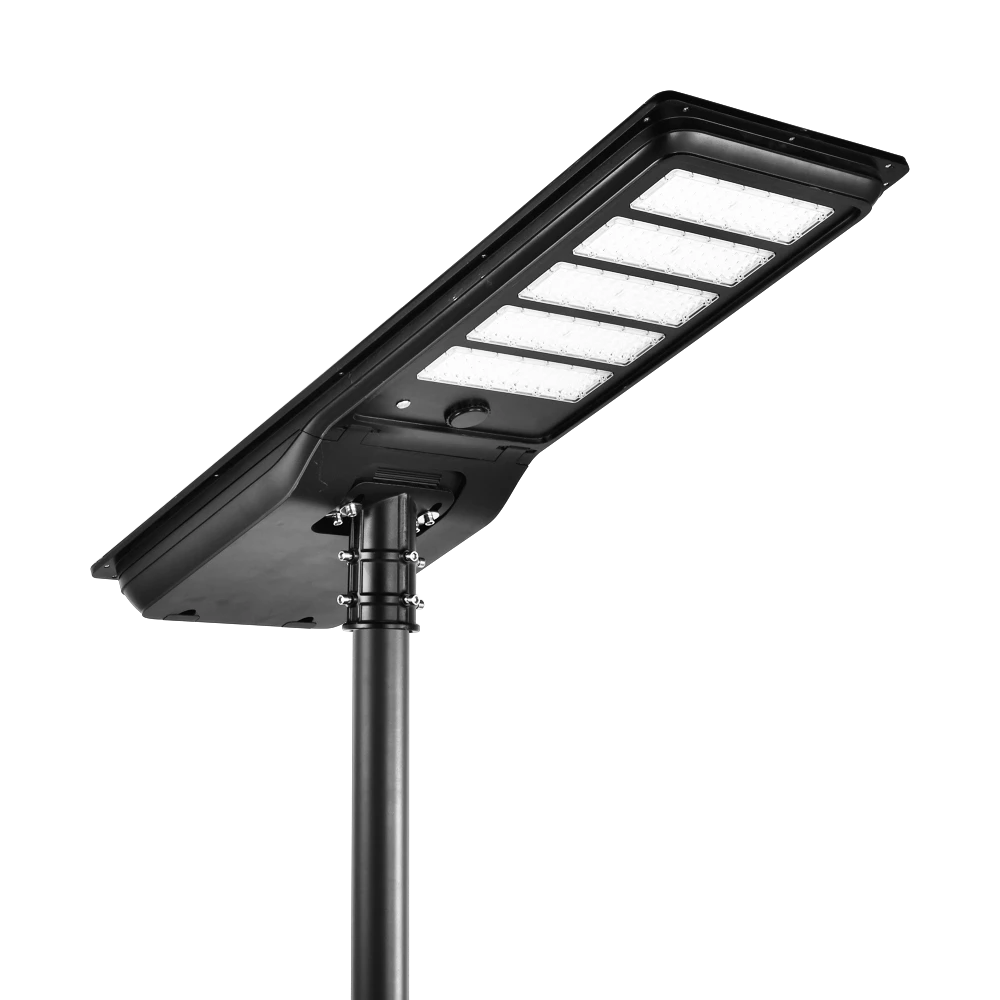
High-efficiency all-in-one solar street light with a monocrystalline solar panel and LiFePO₄ battery. Delivers brighter illumination, wider outdoor coverage, and safer lighting performance for streets and public areas.
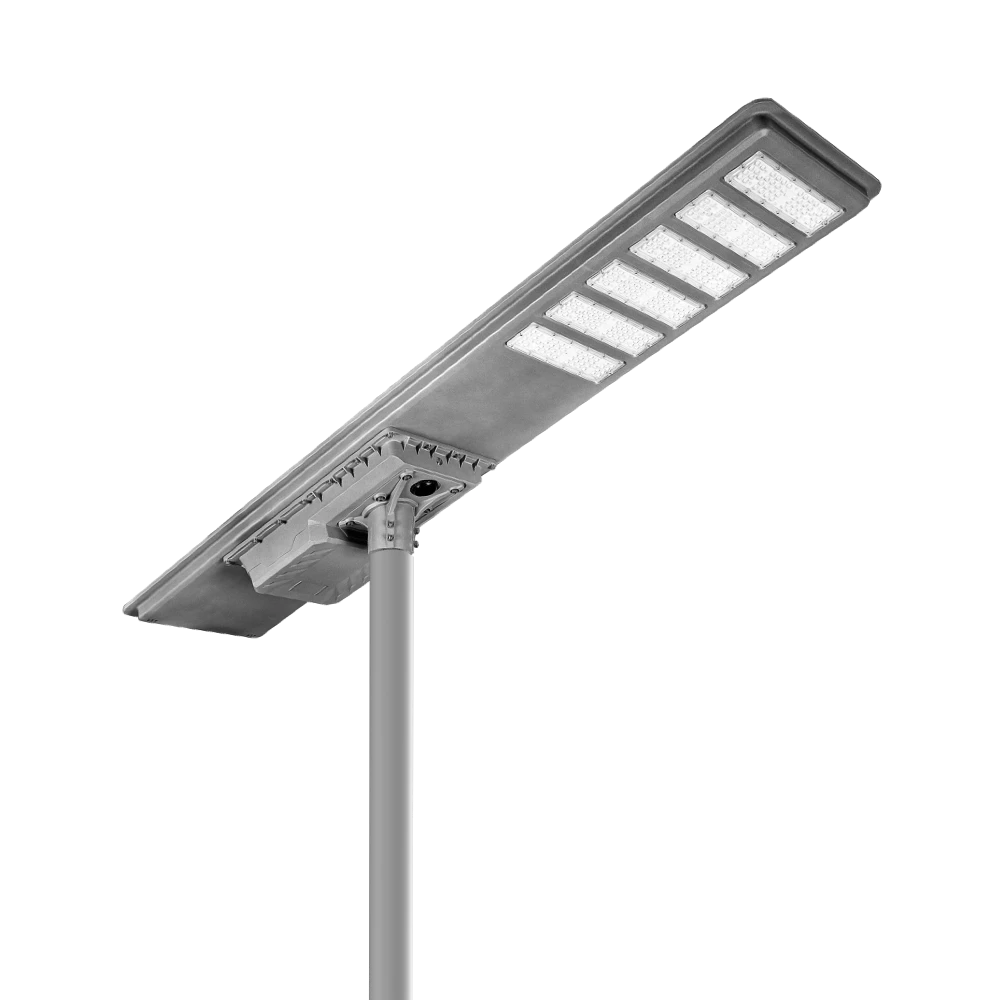
Queneng's Luqiu Innovative Solar Street Light offers energy-saving, durable outdoor lighting. This solar power street light provides a reliable and eco-friendly solution for illuminating your streets and pathways.
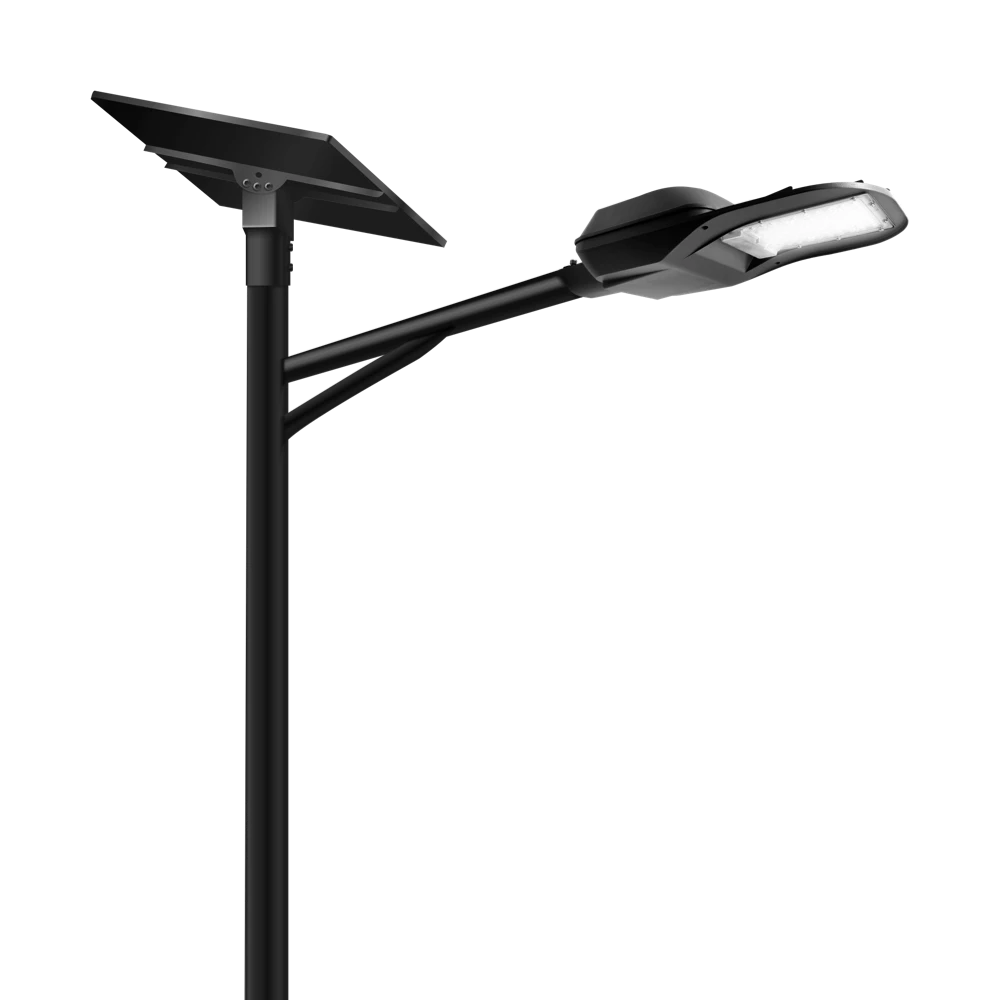
If you would like more information about Queneng solar lighting solutions, please send us a message by filling out the form below. Our professional team will get back to you within 24 hours!
Rest assured that your privacy is important to us, and all information provided will be handled with the utmost confidentiality.
Schedule a Meeting

Book a date and time that is convenient for you and conduct the session in advance.
Have more questions about our products or services?

